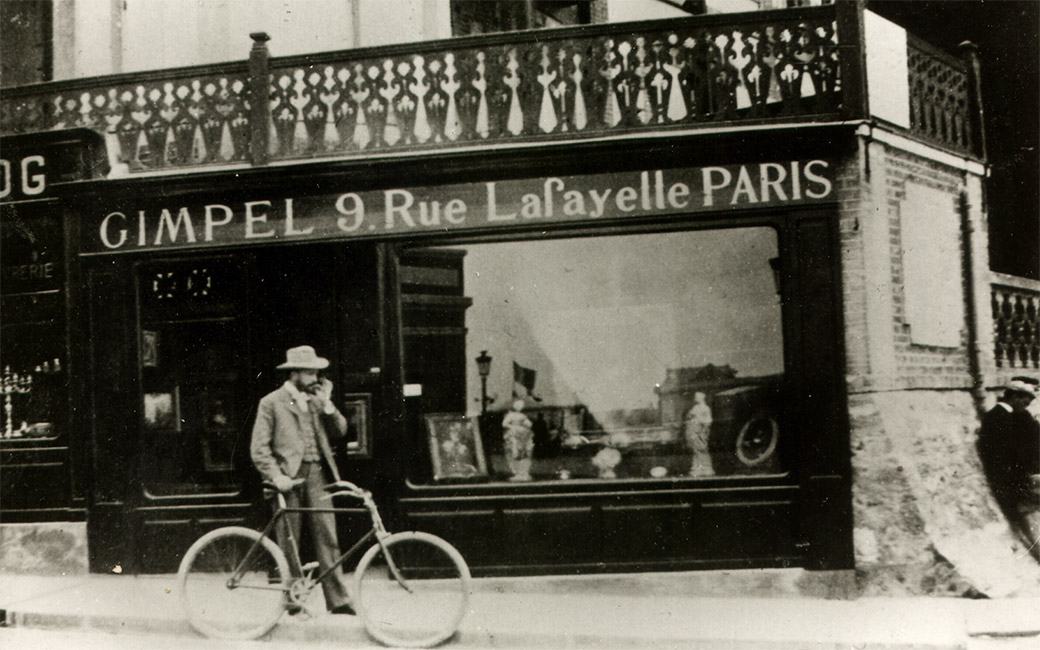Documentary by TU associate dean follows recovery of famous artwork stolen by Nazis
A Q&A with Greg Faller, director of ‘Bombers and Masterpieces: Recovering the Life, Art and Diary of Rene Gimpel’
By Rebecca Kirkman on October 6, 2021

Not only did the Nazis take Rene Gimpel’s life, they stole famous works of art from the dealer/collector, who died in the Neuengamme concentration camp, near Hamburg, Germany, in 1945.
A new documentary by Towson University College of Fine Arts & Communication (COFAC) Associate Dean Greg Faller explores Gimpel’s legacy and follows his heirs as they try to recover the artwork.

The premiere of “Bombers and Masterpieces: Recovering the Life, Art and Diary of Rene Gimpel” will be held 7 p.m. Oct. 14 at Stevenson Village as part of the annual Art to Dine For series, which celebrates art, culture and food. Sponsored by COFAC and staged by Creative Alliance, Art to Dine For supports the Baltimore art organization’s free and reduced-price art, youth education and outreach programs.
The outdoor event includes an introduction by Holocaust scholar and director of the Jewish Museum of Maryland Sol Davis and TU music professor Jonathan Leshnoff. Jewish foods and wines from France and Israel will be offered during the Q&A with Faller and producing partner Lillian Bowers after the film. Tickets are available from Creative Alliance.
Read more from the Baltimore Jewish Times: Upcoming film screening recounts life of art dealer and Holocaust victim
Art to Dine For has been part of a broader collaboration between COFAC and Creative Alliance since 2013.
“Partnering with Creative Alliance allows us to support and participate in many exceptional programs such as bringing Artesanas Mexicanas to campus for student workshops, showcasing our faculty and students in the Art to Dine For series and working with Creative Alliance to determine programming and curriculum for their upcoming Creativity Center,” Faller says. “Creative Alliance is a regional treasure, and COFAC is very excited to continue to collaborate with them.”
We spoke with Faller ahead of the premiere about making the film.
What inspired you to make this documentary?
The co-producer, Lillian Bowers, read Rene Gimpel’s “Diary of an Art Dealer” and thought it offered a fascinating story. I had worked with her before on, so she contacted me to see if I was interested in working on this. After learning about him and reading the diary, I thought the intersection of the decades he covered in his diary, his work in the French Resistance and his heirs trying to recover artworks that were stolen by the Nazis would make an engaging documentary.
What was most surprising about the filmmaking process?
I had never worked with so much archival footage, so finding images and clips that were either in public domain or we could afford to purchase the rights to use proved an interesting challenge. Dealing with international archives (German, French and British) was also a learning experience.
Who can we expect to hear from in the documentary?
Rene Gimpel’s grandson and granddaughter are central to the story. You will also hear from two curators from the Baltimore Museum of Art; Dr. Gary Vikan, former director of the Walters Art Museum; an expert on Proust; and the lawyer working with the Gimpel family. You’ll hear excerpts from Gimpel’s diary and even see an art auction from Christie’s New York.
What do you hope audiences take away from the screening?
I think the main point is what Gimpel’s granddaughter says at the end of the documentary: to re-establish Rene Gimpel as the famous art dealer he was. I also think we learn about perseverance—that his heirs never gave up, that they spent years struggling to have their grandfather’s artwork returned to them.
Anything interesting you discovered that didn’t make it into the final cut?
The documentary presents a mosaic of Gimpel’s life and times. Consequently, there was much left out. Perhaps one piece I wish we could have explored more was the transportation of stolen art to Neuschwanstein: that this iconic German castle became a warehouse for stolen art during WWII.
For more TU arts and culture events, visit events.towson.edu.